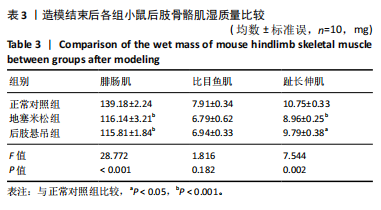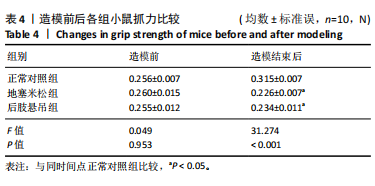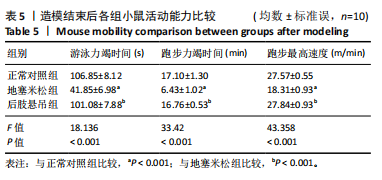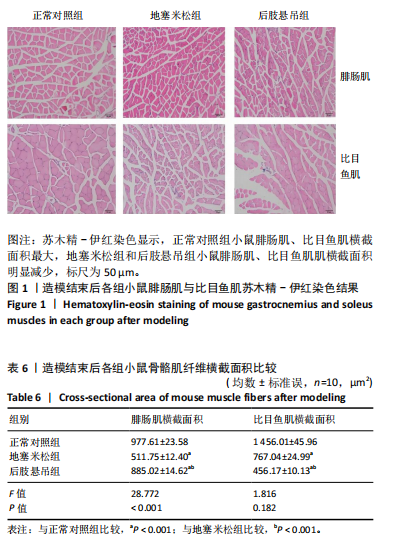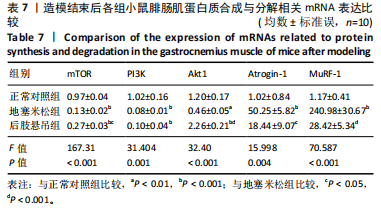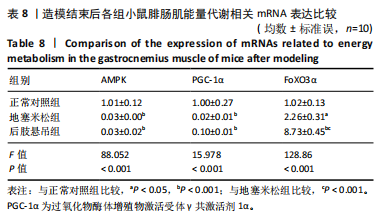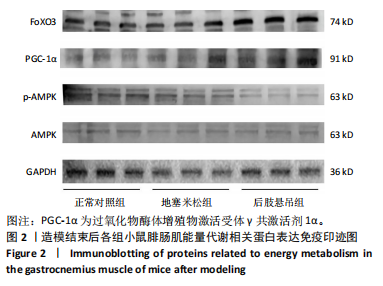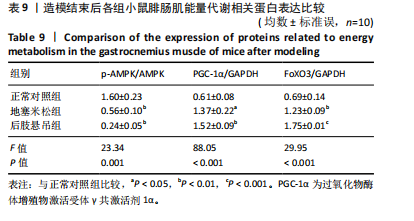[1] CRUZ-JENTOFT AJ, BAHAT G, BAUER J, et al. Sarcopenia: revised European consensus on definition and diagnosis. Age Ageing. 2019; 48(1):16-31.
[2] 刘娟,丁清清,周白瑜,等.中国老年人肌少症诊疗专家共识(2021)[J].中华老年医学杂志,2021;40(8):943-952.
[3] YUAN S, LARSSON SC. Epidemiology of sarcopenia: Prevalence, risk factors, and consequences. Metabolism. 2023;144:155533.
[4] Shen Y, Chen J, Chen X, et al. Prevalence and Associated Factors of Sarcopenia in Nursing Home Residents: A Systematic Review and Meta-analysis. J Am Med Dir Assoc. 2019;20(1):5-13.
[5] BEAUDART C, DAWSON A, SHAW SC, et al. Nutrition and physical activity in the prevention and treatment of sarcopenia: systematic review. Osteoporos Int. 2017;28(6):1817-1833.
[6] BANO G, TREVISAN C, CARRARO S, et al. Inflammation and sarcopenia: A systematic review and meta-analysis. Maturitas. 2017;96:10-15.
[7] AI Y, XU R, LIU L. The prevalence and risk factors of sarcopenia in patients with type 2 diabetes mellitus: a systematic review and meta-analysis. Diabetol Metab Syndr. 2021;13(1):93.
[8] STEFFL M, BOHANNON RW, PETR M, et al. Alcohol consumption as a risk factor for sarcopenia - a meta-analysis. BMC Geriatr. 2016;16:99.
[9] AL-NASSAN S, FUJITA N, KONDO H, et al. Chronic Exercise Training Down-Regulates TNF-α and Atrogin-1/MAFbx in Mouse Gastrocnemius Muscle Atrophy Induced by Hindlimb Unloading. Acta Histochem Cytochem. 2012;45(6):343-349.
[10] SINAM IS, CHANDA D, THOUDAM T, et al. Pyruvate dehydrogenase kinase 4 promotes ubiquitin-proteasome system-dependent muscle atrophy. J Cachexia Sarcopenia Muscle. 2022;13(6):3122-3136.
[11] CHEN LK, WOO J, ASSANTACHAI P, et al. Asian Working Group for Sarcopenia: 2019 Consensus Update on Sarcopenia Diagnosis and Treatment. J Am Med Dir Assoc. 2020;21(3):300-307.e2.
[12] HINZ B, MCCULLOCH CA, COELHO NM. Mechanical regulation of myofibroblast phenoconversion and collagen contraction. Exp Cell Res. 2019;379(1):119-128.
[13] RONG S, WANG L, PENG Z, et al. The mechanisms and treatments for sarcopenia: could exosomes be a perspective research strategy in the future? J Cachexia Sarcopenia Muscle. 2020;11(2):348-365.
[14] PONZETTI M, AIELLI F, UCCI A, et al. Lipocalin 2 increases after high-intensity exercise in humans and influences muscle gene expression and differentiation in mice. J Cell Physiol. 2022;237(1):551-565.
[15] TICE AL, GORDON BS, FLETCHER E, et al. Effects of chronic alcohol intoxication on aerobic exercise-induced adaptations in female mice. J Appl Physiol (1985). 2024;136(4):721-738.
[16] Mendez DA, Ortiz RM. Thyroid hormones and the potential for regulating glucose metabolism in cardiomyocytes during insulin resistance and T2DM. Physiol Rep. 2021;9(16):e14858.
[17] LEVITT DE, LUK HY, VINGREN JL. Alcohol, Resistance Exercise, and mTOR Pathway Signaling: An Evidence-Based Narrative Review. Biomolecules. 2022;13(1):2.
[18] HUGHES DC, GOODMAN CA, BAEHR LM, et al. A critical discussion on the relationship between E3 ubiquitin ligases, protein degradation, and skeletal muscle wasting: it’s not that simple. Am J Physiol Cell Physiol. 2023;325(6):C1567-C1582.
[19] SANTOS BF, GRENHO I, MARTEL PJ, et al. FOXO family isoforms. Cell Death Dis. 2023;14(10):702.
[20] KATOH M, KATOH M. Human FOX gene family (Review). Int J Oncol. 2004;25(5):1495-1500.
[21] LINK W. Introduction to FOXO Biology. Methods Mol Biol. 2019;1890:1-9.
[22] DRUMMOND MJ, ADDISON O, BRUNKER L, et al. Downregulation of E3 ubiquitin ligases and mitophagy-related genes in skeletal muscle of physically inactive, frail older women: a cross-sectional comparison. J Gerontol A Biol Sci Med Sci. 2014;69(8):1040-1048.
[23] ALI T, RAHMAN SU, HAO Q, et al. Melatonin prevents neuroinflammation and relieves depression by attenuating autophagy impairment through FOXO3a regulation. J Pineal Res. 2020;69(2):e12667.
[24] SCHIAFFINO S, DYAR KA, CICILIOT S, et al. Mechanisms regulating skeletal muscle growth and atrophy. FEBS J. 2013; 280(17):4294-4314.
[25] YU M, WANG H, XU Y, et al. Insulin-like growth factor-1 (IGF-1) promotes myoblast proliferation and skeletal muscle growth of embryonic chickens via the PI3K/Akt signalling pathway. Cell Biol Int. 2015;39(8):910-922.
[26] LI Y, CHEN Y. AMPK and Autophagy. Adv Exp Med Biol. 2019;1206:85-108.
[27] Liu D, Wang S, Liu S, et al. Frontiers in sarcopenia: Advancements in diagnostics, molecular mechanisms, and therapeutic strategies. Mol Aspects Med. 2024;97:101270.
[28] BODINE SC, BAEHR LM. Skeletal muscle atrophy and the E3 ubiquitin ligases MuRF1 and MAFbx/atrogin-1. Am J Physiol Endocrinol Metab. 2014;307(6):E469-484.
[29] TOMA-FUKAI S, SHIMIZU T. Structural Diversity of Ubiquitin E3 Ligase. Molecules. 2021;26(21):6682.
[30] PERIS-MORENO D, MALIGE M, CLAUSTRE A, et al. UBE2L3, a Partner of MuRF1/TRIM63, Is Involved in the Degradation of Myofibrillar Actin and Myosin. Cells. 2021;10(8):1974.
[31] LOKIREDDY S, WIJESOMA IW, SZE SK, et al. Identification of atrogin-1-targeted proteins during the myostatin-induced skeletal muscle wasting. Am J Physiol Cell Physiol. 2012;303(5):C512-529.
[32] GUMUCIO JP, MENDIAS CL. Atrogin-1, MuRF-1 and sarcopenia. Endocrine. 2013;43(1):12-21. |

